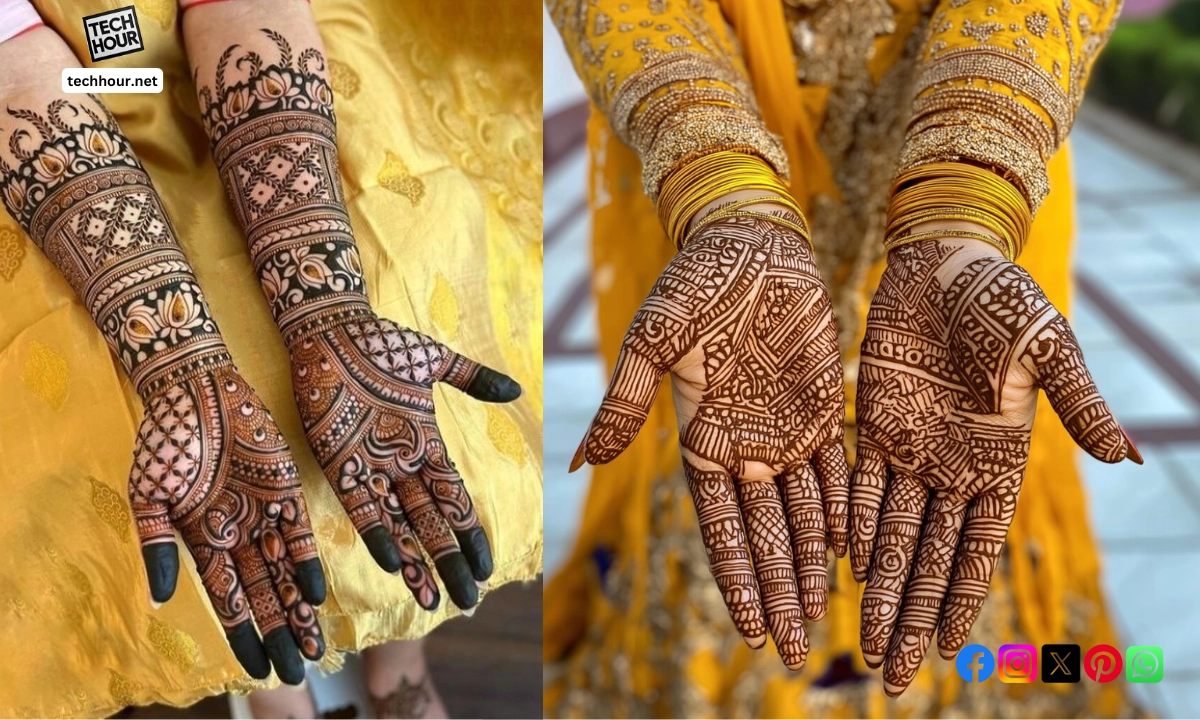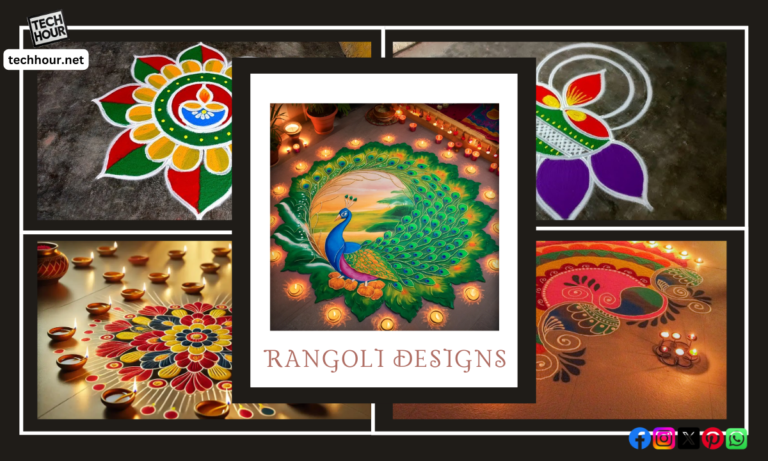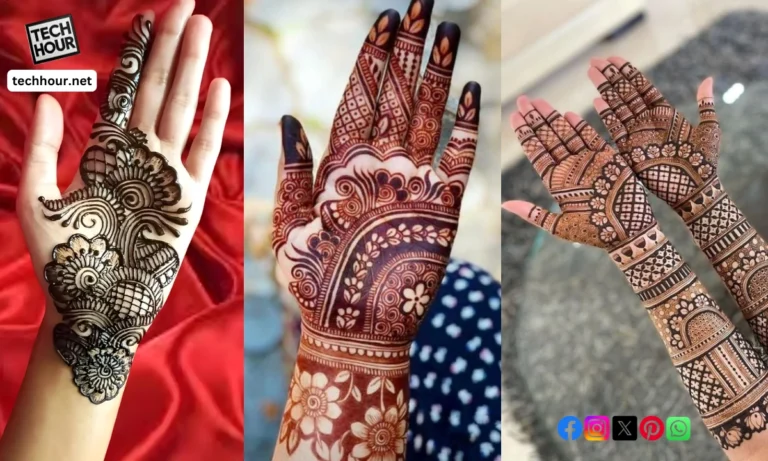Are you curious about the latest trends in Mehndi designs for 2025? Mehndi, a beautiful and intricate form of body art, continues to captivate with its blend of traditional motifs and contemporary styles.
In 2025, modern mehndi designs focus on simplicity and elegance, balancing tradition with a fresh, minimalistic approach. From geometric patterns to abstract art, these designs are perfect for weddings, festivals, and everyday occasions.
The art of mehndi has been cherished for generations, offering a unique way for you to express your style and cultural heritage. As trends evolve, 2025 showcases a fascinating mix of creativity and tradition.
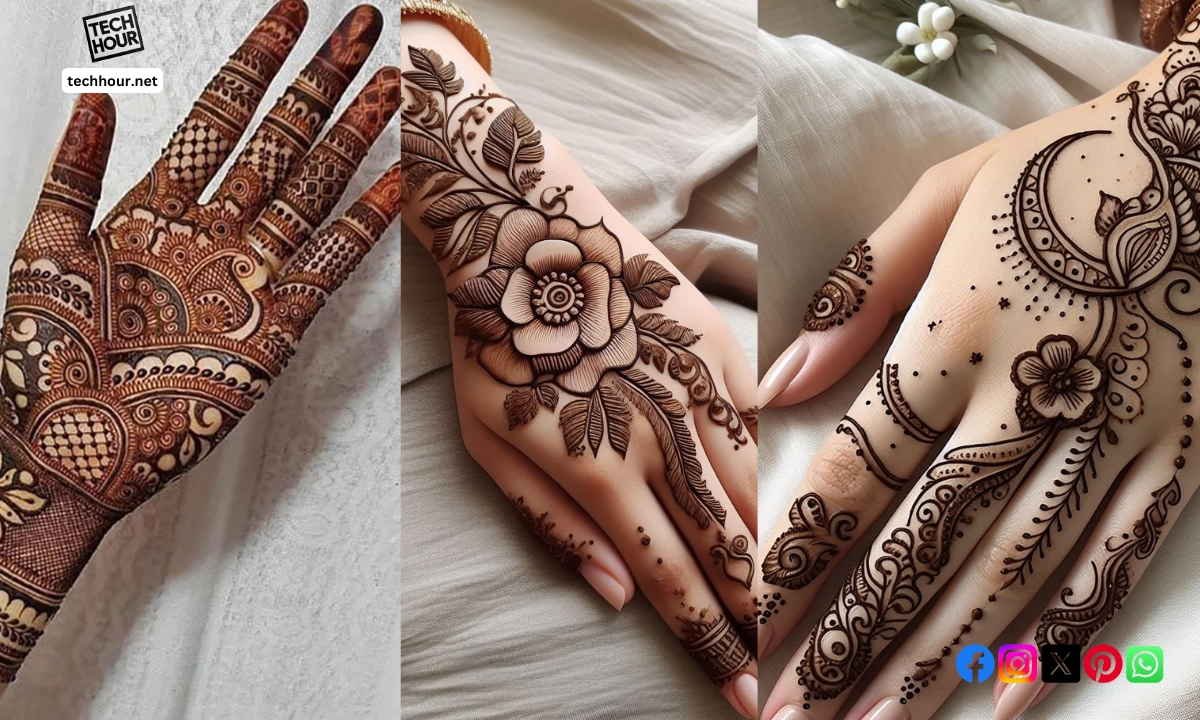
Whether you’re drawn to the classic beauty of a single mandala placed at the center of your palm, or you’re inspired by bolder choices like geometric patterns, modern mehndi allows you to celebrate your style.
Explore the world of modern mehndi designs for 2025 and discover how these artistic creations can enhance your look.
With options ranging from full-hand masterpieces to minimalist accents, you have the chance to make a statement that is uniquely yours. Embrace the charm of Mehndi in 2025 and let your creativity shine.
Evolution of Mehndi Designs
Mehndi designs have changed over time, moving from traditional styles to more modern interpretations. Important aspects include historical roots and the transformation towards blending traditional elements with new patterns.
Historical Significance
Mehndi has a deep historical background, tracing back to ancient cultures across India and the Middle East. Traditionally, mehndi designs featured intricate patterns using floral motifs, paisleys, and vines. These designs held symbolic meanings and were often used in religious and cultural ceremonies, such as weddings and festivals.
You might notice that each design tells a story or represents specific cultural beliefs. Traditional mehndi is often applied during important life events, as it’s believed to bring luck and protection to those wearing it. Each region boasts unique designs, yet they share a common goal of enhancing beauty and creating connections to history.
From Traditional to Modern
In recent years, mehndi designs have evolved to include modern elements. This includes the integration of bold geometric patterns and minimalistic styles, which appeal to those seeking contemporary aesthetics.
Fusion designs blend intricate traditional designs with modern touches, such as Indian-Arabic elements.
You can observe a shift towards simpler, cleaner lines, which make for quicker applications without compromising on elegance. Some designs focus on highlighting specific parts of the body, like the fingers or wrists, to create a more balanced look. This modern approach allows for more personalization, making Mehndi accessible to a wider audience while still honoring its rich heritage.
Elements of Modern Mehndi Designs
The world of Mehndi designs in 2025 is a blend of tradition and modernity. Various elements such as geometric shapes, floral motifs, peacock patterns, and minimalistic approaches are increasingly popular, showcasing the artistic evolution of this art form.
Geometric Shapes and Symmetry
Geometric shapes and symmetry add a modern twist to traditional mehndi. You will often see patterns featuring triangles, squares, and circles that create a visually striking effect. These shapes bring an element of symmetry, making the design look balanced and organized.
Designs like these are versatile and can be adjusted to fit different parts of the body, be it the hands, feet, or arms. They’re particularly suited for people who prefer a contemporary look that still respects age-old techniques. The precision in geometric designs requires steady hands and expert skill, which adds to their charm and appeal.
Floral and Nature-Inspired Patterns
Floral patterns are timeless favorites in Mehndi art. In 2025, you see an increased focus on nature-inspired elements in modern designs. Flowers like roses, lotuses, and daisies frequently make their way into these patterns.
Nature’s dynamic flow offers endless possibilities for customization. These designs often incorporate leaves and vines, extending the design in a natural, flowing manner. This style works particularly well for weddings and festivals. You can opt for detailed floral patterns or simpler outlines, both achieving a harmonious aesthetic that’s pleasing to the eye.
Incorporation of Peacock Motifs
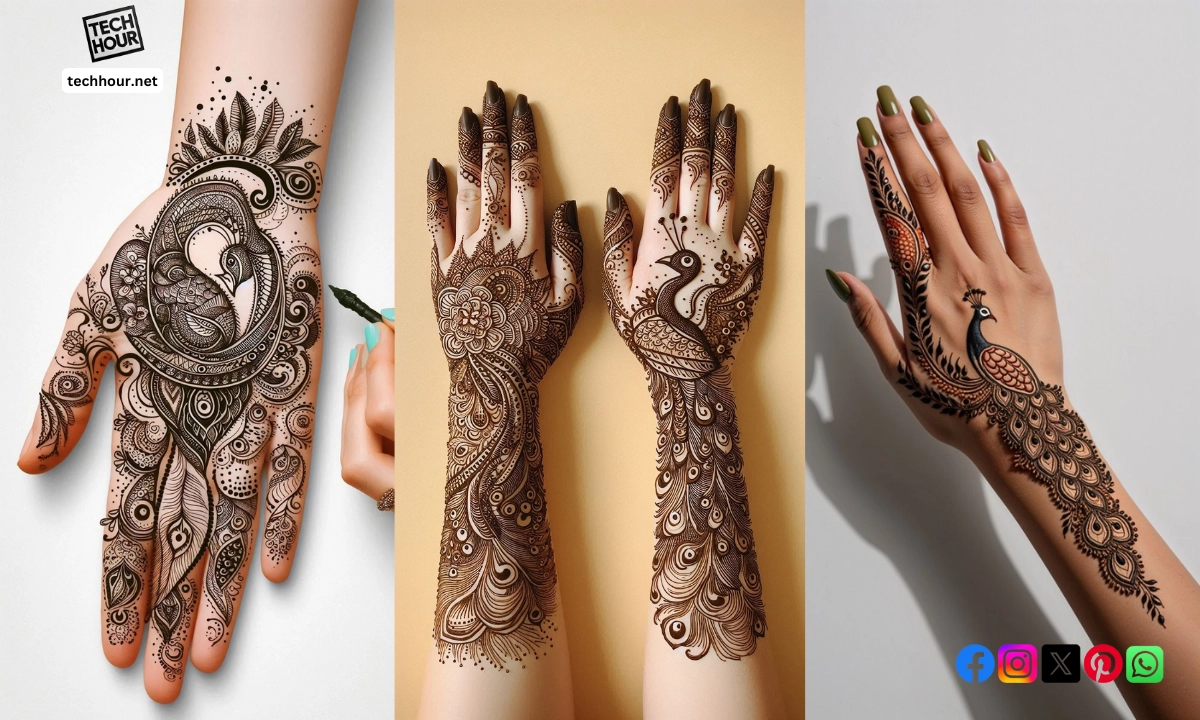
Peacock motifs bring elegance and grandeur to any mehndi design. This element continues to be popular due to its intricate detailing and symbolic meaning. A peacock’s feathers add a rich texture with swirls and curves that enhance the visual appeal.
When combined with other elements, like traditional motifs or even geometric designs, peacocks provide an artistic focal point. Highly detailed peacock designs are often chosen for significant occasions such as weddings. Their complexity adds a sense of luxury and opulence, making these designs a favorite choice for bridal mehndi.
The Rise of Minimalist Trends
Minimalist mehndi designs have gained popularity for their simplicity and elegance. These designs focus on minimal patterns, often highlighting empty spaces that enhance the effect of the artwork.
Minimalist styles might feature simple dots, small floral elements, or thin lines to create stunning visual effects. Perfect for those who dislike heavy, intricate mehndi, minimalistic designs take less time to apply and are ideal for casual events.
The essence of this trend is in its ability to convey beauty and grace without overwhelming the senses. Its rising popularity in 2025 speaks to the evolving tastes and modern preferences of Mehndi aficionados.
Cultural Diversity in Mehndi
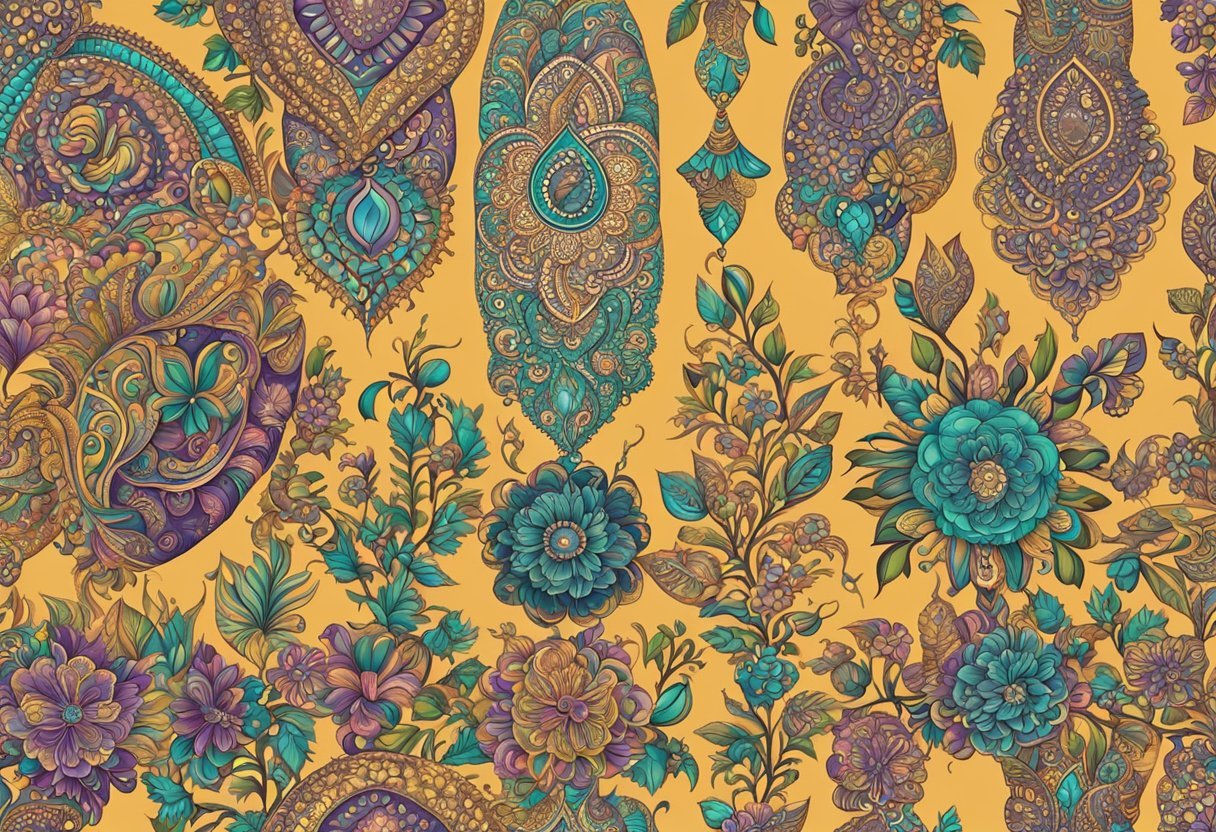
Mehndi is a rich art form that spans various cultures, each bringing its unique flair. From the bold outlines of Arabic designs to the intricate details in Indian bridal patterns, mehndi showcases an array of styles. Fusion Mehndi combines these traditions, resulting in modern, personalized designs that continue to evolve.
Arabic Mehndi Influences
Arabic mehndi designs are characterized by bold, striking patterns that are both simple and elegant. These designs feature large floral motifs connected with long, sweeping lines. They are often applied to the front and back of hands, lending a graceful look.
The designs leave significant space between motifs, making applications quicker and less intricate. A popular choice for various occasions, these designs are known for their versatility. You can see them during weddings and festivals, where their striking appearance complements traditional outfits.
Arabic mehndi is not limited to floral patterns; it also includes abstract and geometrical shapes that provide a contemporary twist. This style serves as a versatile option for both festive and casual settings.
Indian Bridal Mehndi Traditions
Indian bridal mehndi designs are renowned for their complexity and detail. These designs often cover the entire hands and sometimes extend to the arms and legs. Intricate motifs include peacocks, paisleys, and even personalized elements like the bride and groom’s initials.
Bridal designs are more than mere decoration; they hold cultural importance. Symbolism plays a vital role, with elements representing joy and prosperity. The application process is an event in itself, often accompanied by music and family gatherings.
These designs can take several hours to complete, showcasing immense artistry and patience. Incorporating both traditional and modern elements, Indian bridal mehndi remains a beloved ritual in weddings. Each design tells a unique story, offering a visual narrative of cultural values and personal sentiments.
Fusion Mehndi Art
Fusion Mehndi art combines diverse elements from various traditions, creating unique and personal designs. This style blends Indian intricacy with Arabic boldness, resulting in vibrant and modern patterns.
Fusion designs often incorporate cultural symbols, geometric patterns, and personalized elements, making them appealing to a wide audience. You can find fusion mehndi in modern weddings and other festive occasions, where it offers a fresh take on traditional styles.
Artists often experiment with new motifs, creating versatile designs suitable for different events. This mix of styles allows for a high level of creativity, enabling you to personalize the designs according to your preferences.
Fusion Mehndi reflects the blending of cultural identities, appealing to those who want a design that stands out.
Mehndi for Special Occasions
Mehndi plays a crucial role in enhancing beauty during important events. It is used to complement bridal looks in wedding ceremonies and bring a touch of art to festivals and celebrations.
Wedding Ceremonies and Bridal Look
In wedding ceremonies, mehndi is a symbol of beauty and tradition. Brides often have intricate patterns that extend from their hands up to their elbows. These designs can include motifs like peacocks, flowers, and paisleys.
Traditional Indian weddings particularly favor bold and detailed designs that represent joy and new beginnings.
Bridal mehndi is not just about aesthetics; it also holds cultural significance. The dark hue symbolizes deep love between the couple. You may even find modern full-hand designs that incorporate elements that match your bridal outfit, making for a cohesive look.
Festivals and Celebratory Events
During festivals like Diwali, Eid, or Navratri, mehndi serves as a form of expression and celebration. Simpler designs are often chosen to match the festive spirit without overwhelming the overall look.
This allows for quick application while still providing a meaningful and artistic expression. Options include geometric patterns and minimalist styles that are perfect for keeping up with modern trends. Whether you’re attending a festive gathering or enjoying a casual party, these designs maintain elegance and add a touch of creativity to your appearance.
Popular Mehndi Design Patterns
In 2025, modern Mehndi designs are becoming more creative and unique. Key patterns include intricate mandalas, elegant floral motifs, and detailed designs using dots and lines. Each style offers something special, whether you’re looking for a simple or more complex look.
Mandala Design Spotlight
Mandalas remains a popular choice for Mehndi in 2025. These designs feature intricate, circular patterns that symbolize balance and unity. They start from a central point and work their way outward in layers, each with distinct motifs.
The patterns can be simple circles or detailed with floral or geometric shapes. A mandala design on the palm or back of the hand can serve as a stunning focal point. Adding small details like dots and leaves enhances the overall look.
Mandalas can be complemented by simpler elements on the fingers or wrist, making the entire design cohesive yet eye-catching.
The Elegance of Floral Mehndi
Floral mehndi designs bring a touch of elegance and natural beauty. They are perfect for anyone seeking a timeless look with a modern twist.
These patterns often consist of roses, lotuses, or vines. Flowers are not only beautiful but also carry symbolic meanings, such as love or growth.
You may choose large, blooming flowers for a more prominent design or small clusters of flowers for a delicate touch. Adding leaves or tendrils can make the pattern more fluid and dynamic. These designs can be extended to cover the arms or simply highlight the hands, depending on your preference.
Detailed Dots and Lines
Dots and lines are fundamental elements in many mehndi designs. They provide texture and intricacy.
Designs centered on these features can range from straightforward to highly detailed. Lines can create geometric shapes or flowing patterns, while dots add contrast and emphasis.
A design focused on lines and dots can be customized with varying sizes and spacing. These elements blend seamlessly with other patterns, like mandalas or florals, offering endless possibilities. For a bold effect, consider layering or repeating specific motifs. These designs are versatile, making them suitable for formal events or casual gatherings.
Application Techniques
Applying mehndi can vary greatly depending on whether you choose traditional or modern methods. Both approaches feature unique tools and require different techniques to give henna designs the desired look.
Traditional vs. Contemporary Methods
Traditional methods typically involve using a cone made from rolled plastic or a wooden stick. The cone allows for precise lines, essential for intricate henna patterns found in older styles.
Such patterns might include paisleys or floral motifs, popular in cultural events.
Contemporary methods bring new trends like color mehendi and tattoo-style designs. These often include more abstract lines and geometric shapes.
Techniques may involve stencils for speed and precision. Unlike traditional methods, contemporary ones may use additional substances for a varied color palette.
Tools of the Trade
The tools you choose can influence the final appearance. For traditional henna, the most common tool is a plastic cone filled with organic henna paste. This allows you to create both thin and thick lines, ideal for detailed work.
Modern designs may involve tools like stencils or specialized kits. Stencils simplify complex designs and can be reused, saving you time.
If you’re exploring color mehendi, you might use brushes to apply different shades. Both methods benefit from applicators that fit comfortably in your hand for better control.
Designs for Different Body Parts
Explore the latest mehndi trends specifically designed for different body parts. This guide focuses on innovative back hand mehndi, chic leg mehndi art, and decorative mehndi for feet. Each style highlights unique patterns and aesthetic touches suitable for various occasions.
Innovative Back Hand Mehndi
Back hand mehndi designs have come a long way, combining tradition with modern elements. These designs often feature geometric patterns and floral motifs that elegantly wrap around the wrist.
You might find designs that incorporate negative space or delicate chains, giving the illusion of a henna bracelet. They are perfect for events where you want to make a subtle yet stylish statement.
These designs complement various outfits, from traditional attire to Western wear, making them versatile choices for any occasion.
Chic Leg Mehndi Art
In 2025, leg mehndi designs are all about bold and creative patterns that draw attention. Popular choices include intricate paisleys and swirling vines that wind gracefully around your legs.
Designs might extend from the ankle to the knee, allowing for both minimalist and full-coverage options. These patterns are perfect for brides looking to add an extra touch to their bridal ensemble.
For casual events, simpler designs focusing on angles and lines work beautifully with summer dresses or beachwear.
Decorative Mehndi for Feet
Mehndi for feet often focuses on symmetrical designs that enhance the natural shape and contours. Patterns can range from elegant floral motifs to more daring geometric shapes.
These designs are ideal for weddings and festive occasions, creating an eye-catching effect with sandals or barefoot. Placing heavier designs across the ankles or creating a floral chain around the foot can mimic the look of foot jewelry.
With various styles available, you can match your foot mehndi with any outfit and occasion seamlessly.
Taking Care of Your Mehndi
Proper care of your mehndi can keep intricate designs vibrant and long-lasting. Understanding both the techniques and precautions ensures your mehndi looks its best for any occasion, whether it’s a wedding or a festival.
Tips for Longer-Lasting Designs
To make sure your mehndi lasts as long as possible, focus on preparation and drying techniques.
- Before Application: Clean your skin with soap to remove oils and lotions. These can create a barrier that prevents the mehndi from staining properly.
- Drying: Let the mehndi dry naturally. Avoid using a hairdryer as it may dry it too quickly, leading to cracks.
Once the mehndi is dry, apply a mix of lemon juice and sugar. This helps it adhere to your skin and deepen the color. You can dab this mixture on the dried mehndi using a cotton ball.
Aftercare Do’s and Don’ts
Taking care of your mehndi once it’s applied is crucial for ensuring that it stays vivid.
- Do: Keep it dry for at least 24 hours. Water can wash away the mehndi prematurely, reducing its color intensity and lifespan.
- Don’t: Avoid excessive scrubbing or using soap directly on the design. Use a light oil to clean the area instead. This helps keep the skin moisturized and the design intact.
If you have an intricate mehndi design, cover it with a loose cloth while sleeping. This prevents it from rubbing off onto your sheets.
Also, avoid wearing tight clothing that might rub against the mehndi; this can smudge your beautiful patterns.
FAQs
For 2025, mehndi designs are seeing a mix of modern styles, evolving Arabic patterns, and timeless classics. Whether you’re looking for simple designs for casual events or intricate bridal patterns, here’s what you need to know.
What are the latest trends in modern Mehndi designs for 2025?
In 2025, modern Mehndi designs focus on minimalism and elegance. Mandalas, geometric patterns, and clean lines are popular choices. These styles offer a fresh, contemporary look that pairs well with various occasions, from weddings to casual gatherings.
How has the Arabic mehndi style evolved for 2025?
Arabic mehndi styles in 2025 emphasize creativity and bold patterns. They often feature floral motifs and flowing vines that cover large portions of the hands and arms.
This year, you will notice more intricate details and dynamic shapes in these designs.
Can you suggest some simple and elegant Mehndi designs for casual occasions in 2025?
For casual occasions in 2025, consider opting for minimalist designs like small mandalas, geometric patterns, or understated floral elements. These styles are quick to apply and versatile enough for everyday wear, ensuring a chic look without being overly elaborate.
What are the innovations in bridal mehndi designs for the year 2025?
Bridal mehndi designs in 2025 incorporate modern elements such as mandalas and spirals. These complex patterns balance tradition with a modern twist.
Many brides are now choosing intricate designs that can include personalized elements like initials or symbols significant to them.
Which mehndi designs are considered timeless and classic for full hands?
Timeless mehndi designs for full hands include intricate paisley patterns, peacocks, and traditional motifs that never go out of style.
These classic designs are layered and detailed, ensuring an elegant and traditional appearance suitable for any event.
What techniques can be used to ensure long-lasting mehndi designs?
To ensure your mehndi designs last longer, apply a lemon-sugar mixture after the mehndi dries to preserve it on the skin. Keeping the paste on for at least 4-6 hours can enhance the color.
Additionally, avoid washing the area with soap and water right after removal.

